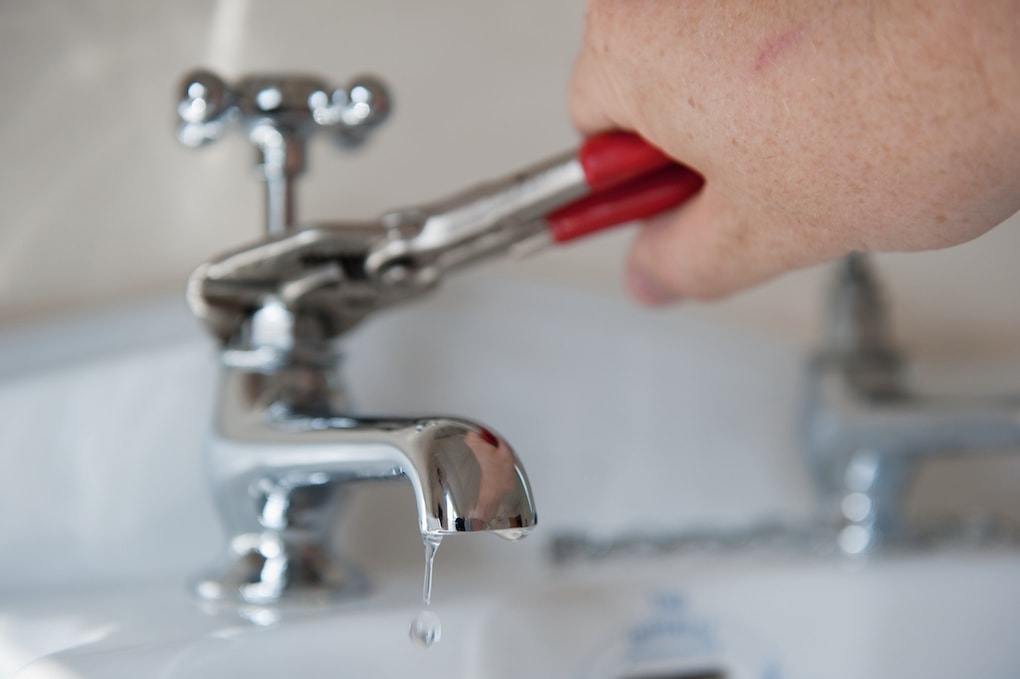They are making a few great pointers related to 4 Ways to Troubleshoot Low Water Pressure in general in the article followed below.

Low water pressure in your home can be a discouraging problem, affecting everything from showering to cleaning meals. If you're experiencing weak water circulation, there are numerous possible reasons and solutions to check out. In this guide, we'll talk about typical reasons for low water pressure and practical steps to resolve the problem successfully.
Intro to Low Tide Pressure
Low water stress happens when the flow of water from your taps, showers, and various other components is weaker than common. This can make everyday tasks extra difficult and less efficient. Understanding the reasons for low water stress is critical to finding the ideal option.
Typical Causes of Low Water Pressure
Pipeline Obstructions
In time, pipes can become clogged with mineral deposits, sediment, or particles, restricting the circulation of water. This is a typical concern in older homes with galvanized steel pipes.
Deterioration
Deterioration within pipes can result in leaks and reduced water stress. Rust accumulation can tighten water flow, specifically in maturing plumbing systems.
Faulty Pressure Regulatory Authorities
Pressure regulatory authorities are accountable for keeping regular water stress in your home. If they malfunction, it can result in low tide pressure or unequal flow throughout your house.
Metropolitan Water Issues
Sometimes, the issue exists outside your home. Local supply of water concerns, such as main line leakages or maintenance work, can briefly lower water stress in your area.
Just How to Diagnose Low Water Stress
Checking Taps and Fixtures
Start by testing the water stress at different taps and components throughout your home. If the concern is isolated to specific areas, it might indicate localized problems.
Examining Pipelines
Inspect visible pipes for indicators of leakages, corrosion, or obstructions. Focus on any kind of uncommon sounds, such as knocking or rattling pipes, which could show issues within the plumbing system.
Consulting with a Plumber
If you're not able to determine the root cause of low tide pressure, think about employing a professional plumber to conduct a complete evaluation. They can recognize underlying issues and recommend proper services.
DIY Solutions to Repair Low Water Stress
Cleaning Up Aerators and Showerheads
Natural resources can gather in aerators and showerheads, reducing water circulation. Remove and clean these components on a regular basis to boost water pressure.
Flushing Hot Water Heater
Sediment buildup in the hot water heater can restrict circulation and lower performance. Flushing the tank periodically helps remove debris and keep optimum efficiency.
Checking Pressure Regulatory Authority
Make sure that the stress regulator is working correctly. Changing or changing the regulator can aid bring back appropriate water stress throughout your home.
Clearing Up Clogs in Pipes
For minor blockages, attempt using a plumbing serpent or chemical drainpipe cleaner to clear blockages in pipelines. Beware when making use of chemicals and comply with safety and security standards.
When to Call a Specialist Plumber
If do it yourself initiatives fall short to deal with the concern or if you believe considerable plumbing problems, it's finest to seek support from a qualified plumber. They have the knowledge and devices to deal with complex issues securely and properly.
Safety Nets to Preserve Water Pressure
Routine Maintenance
Schedule routine upkeep for your plumbing system to avoid issues such as deterioration, leaks, and obstructions. Dealing with minor issues early can assist prevent even more substantial fixings later.
Mounting a Stress Booster
Consider installing a stress booster pump to improve water pressure in locations with continually reduced flow. This can be specifically useful for multi-story homes or properties with high-demand fixtures.
Surveillance Water Usage
Bear in mind water usage practices and avoid ill-using the plumbing system. Easy adjustments, such as staggering showers and laundry loads, can help preserve ample water pressure.
Final thought
Taking care of low tide pressure can be frustrating, but recognizing the underlying causes and implementing proper solutions can bring back optimum flow throughout your home. Whether it's cleaning aerators, examining pipes, or seeking advice from a plumber, taking proactive steps can ensure a steady supply of water for your daily requirements.
FOUR WAYS TO FIX LOW WATER PRESSURE NOW
Turning on a shower or faucet only to find the water comes out in a sad, slow drizzle is never a good feeling. How exactly are you supposed to wash a pan or take a quick shower when it takes 10 minutes just to rinse off a little soap? The good news is that when your water pressure is bad, there's always a cause: typically one that can be easily fixed. Here are some of the most common causes of low pressure and what you can do to fix the issue:
DEBRIS AND MINERAL DEPOSIT BUILDUPS
If you notice low water pressure from just one or two of the fixtures in your house, the problem likely has to do with debris buildup. Water is full of minerals and other debris, all of which can accumulate in your pipes and on your fixtures. This can cause a blockage that affects how much water flows through. To fix this, try filling a small plastic bag with white vinegar, and use a rubber band to hang it around your showerhead or faucet. Let the head of the fixture soak for a few hours, and the vinegar should loosen the deposits.
WATER LEAKS
Leaks are another common cause of low water pressure. If water is flowing out of your plumbing through a hole or crack before it can reach your fixture, the pressure coming out of the faucet or showerhead will be lower. A plumbing professional is your best bet for finding and repairing a leak in your water supply pipes.
Leaks are another common cause of low water pressure. If water is flowing out of your plumbing through a hole or crack before it can reach your fixture, the pressure coming out of the faucet or showerhead will be lower. A plumbing professional is your best bet for finding and repairing a leak in your water supply pipes.
FOUR WAYS TO FIX LOW WATER PRESSURE NOW
Turning on a shower or faucet only to find the water comes out in a sad, slow drizzle is never a good feeling. How exactly are you supposed to wash a pan or take a quick shower when it takes 10 minutes just to rinse off a little soap? The good news is that when your water pressure is bad, there's always a cause: typically one that can be easily fixed. Here are some of the most common causes of low pressure and what you can do to fix the issue:
DEBRIS AND MINERAL DEPOSIT BUILDUPS
If you notice low water pressure from just one or two of the fixtures in your house, the problem likely has to do with debris buildup. Water is full of minerals and other debris, all of which can accumulate in your pipes and on your fixtures. This can cause a blockage that affects how much water flows through. To fix this, try filling a small plastic bag with white vinegar, and use a rubber band to hang it around your showerhead or faucet. Let the head of the fixture soak for a few hours, and the vinegar should loosen the deposits.
WATER LEAKS
Leaks are another common cause of low water pressure. If water is flowing out of your plumbing through a hole or crack before it can reach your fixture, the pressure coming out of the faucet or showerhead will be lower. A plumbing professional is your best bet for finding and repairing a leak in your water supply pipes.
Leaks are another common cause of low water pressure. If water is flowing out of your plumbing through a hole or crack before it can reach your fixture, the pressure coming out of the faucet or showerhead will be lower. A plumbing professional is your best bet for finding and repairing a leak in your water supply pipes.
A VALVE ISSUE
If you have low water pressure throughout your home, check your main shut-off valve to make sure it's completely open. You may also want to see if there's a pressure-reducing valve installed. If there is, have a plumber help you adjust the settings to get the pressure you're looking for.
OTHERS USING WATER
Believe it or not, your low water pressure could be caused by your neighbors. If you notice low pressure at certain times of day, it may be because you and the people living next to you have similar schedules - when everyone is showering at the same time, the pressure will be lower in every home. Low pressure throughout the neighborhood may also be caused by an issue with your municipal water supply. If that's the case, call the supplier to see if they're working on the issue.
https://www.rotorooter.com/blog/water-leaking/low-water-pressure-fixes/

Do you really like more info about Low Water Pressure in the House?? Try leaving a short review further down. We would be pleased to see your thoughts about this write up. We hope that you visit us again in the future. Loved our article? Please quickly share it. Help other people locate it. Thank you so much for your time invested reading it.
Call